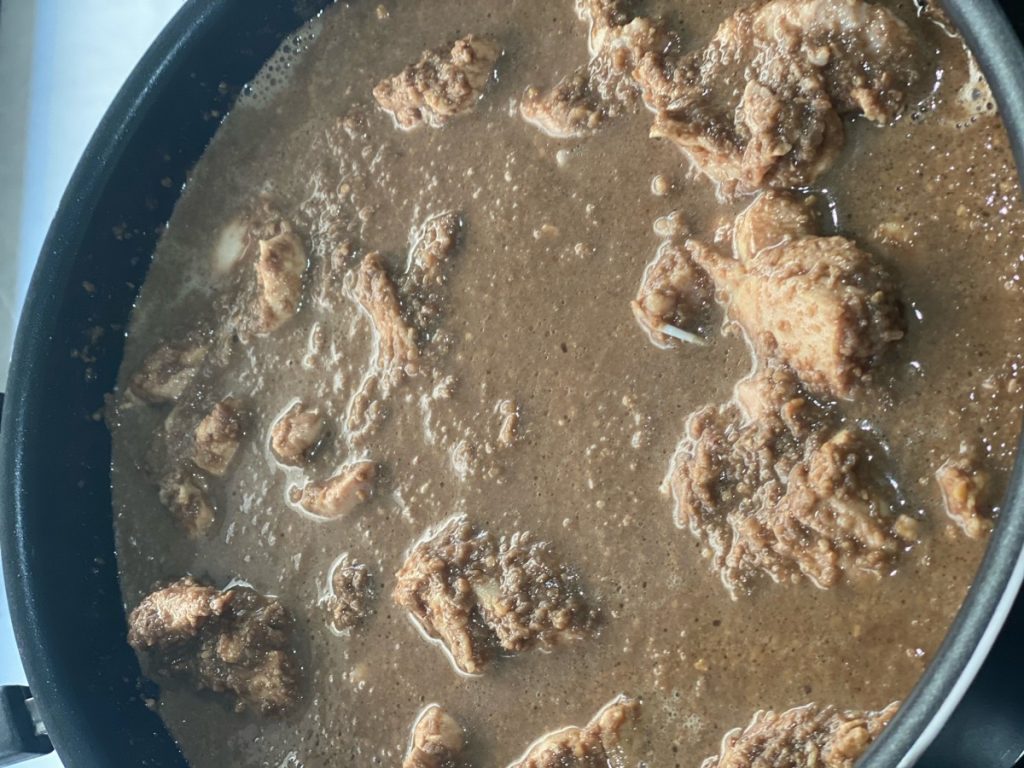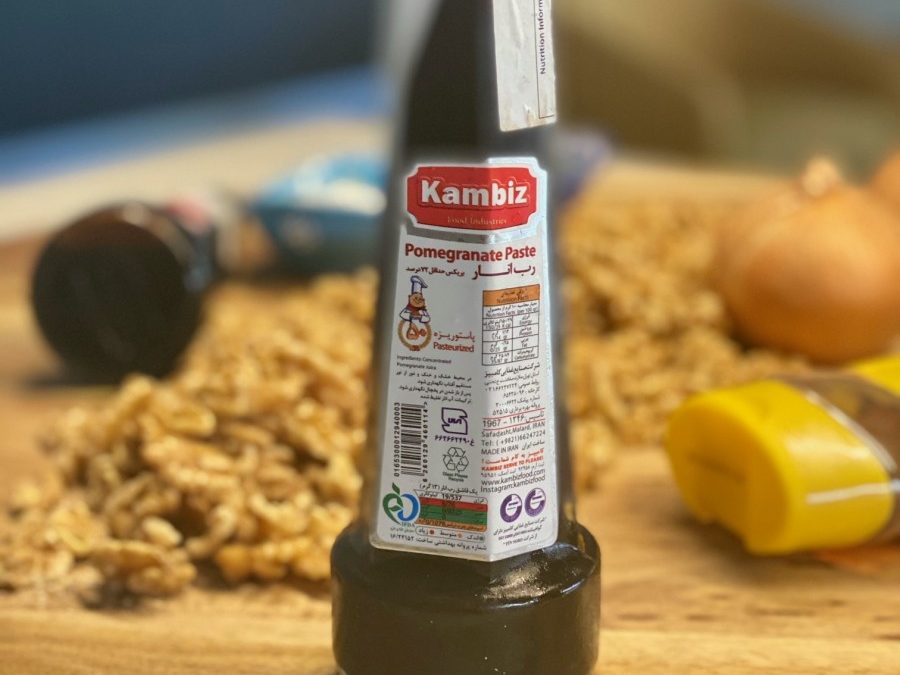Erfan from Shiraz Persian Restaurant in Surfers Paradise teaches us how to make a classic Persian dish, Fesenjan.
Ingredients for Fesenjan
■ 3 Large brown onions
■ 500 grams of walnuts are needed.
■ 1 full jar of Kambiz pomegranate paste (available from Shiraz Bazaar online store: orders.shirazexpress.com.au)
■ 1.5 kg chicken thigh fillet, skin off (cut into 3 cm pieces)
■ 1 tablespoon salt
■ One tablespoon honey
■ 1/2 tablespoon sugar
History of Fesenjan
IF YOU HAVE BEEN TO IRAN, or if you have any friends who have ever been to Iran, probably one of the highlights of the trip would be the food. And one of the most amazing dishes they would remember is fesenjoon.
This beautiful dish is simple to make, but most people think it is hard to make! I have been married to my wife for three years and she has never made it! We make it in a different way at the restaurant with our own recipe, but at home, I make a simple version.
This dish can be made in a lot of different ways. But the ingredients should include ground walnuts, pomegranate paste, and meat (although there is some argument about this) plus simple seasonings like salt and sugar.

Different Representations of Fesenjan
This dish can be made in different ways because different parts of Iran have different tastes. In the north of Iran, there’s a very big mountain chain called Alborz, which works like a big, tall wall. Humidity and rainfall are stuck behind it, which is the north part of Iran. Those areas in the North are lush and green. The trees are acidic and the food is quite sour.
If you go to the North of Iran and have a fesenjoon, it’s ultra-sour. They don’t add honey. They don’t add sugar. None. Zilch. Zero. In the North of Iran, poultry is very popular. But if you have fesenjoon, they will make it with chicken, rather than the duck meat of the other parts of the country.
In Iran’s southwest, people love meat. They just love meat to death. Mostly they would probably have it for breakfast if they could. They make their fesenjoon with meat, meatballs et cetera. In other parts of Iran, like Esfahan with its historic sites, you’ll find everything is ultra-sweet.
Accordingly, the fesenjoon there is super sweet. The capital Tehran is where I was born and raised for 23 years of my life. The flavors there are subtle and balanced. It is a balance between sweet and sour and salt. So my recipe is the Tehrani version – we call it the dancing of flavours. It’s amazing.
Procedure
We start off by peeling the onions. If you have a mincer at home, go ahead and mince three-quarters of the walnuts and the onions. A good food blender will also suffice. Just blend the hell out of the walnuts and the onions.
Then put it on the stove and let it boil with medium heat. Add 750ml of water, and let it boil for about 45 minutes, or until it becomes thicker. Use a spatula to basically stir it every now and then, because walnuts tend to stick to the bottom of the pot.
After 45 minutes, add one glass of very, very cold water (you can add ice if you want). We are shocking this stew. This releases a bit of oil from the walnuts. By the way, this dish, when it’s made, if you leave it for a while, you will see a layer of oil on top. Don’t panic. That’s natural walnut oil. Just stir it in.
After the cold water, wait five minutes. Then, add three-quarters of the pomegranate paste, and stir.
Add in the chicken, precut in three-centimetre cubes. Thigh meat is the best option.
Add salt, honey, and sugar. All three should be in exactly equal amounts. Occasionally stir. After an hour, add the remaining pomegranate paste.
Add the remainder of the walnuts and boil on low heat for another hour. You may have to keep stirring it to make sure it doesn’t stick to the bottom. In Iran, the opinion is that the longer it cooks on low heat, the better it is. They say it has been settled.
Persian Rice
For the rice, Persian rice, please use the recipe from the Summer edition of Silver (silvermagazine. com.au) but you can skip the barberries.

And that’s it! You’ve got yourself one of the most popular dishes of Iran! Nooshe Jan! (Which means, “May the food become a part of your soul.” ■
All the ingredients for this dish can be bought at the Shiraz Bazaar.
See orders shirazexpress.com.au.
Want to know more recipes from Shiraz Bazaar? Click here.

Editor for Silver Magazine Gold Coast

